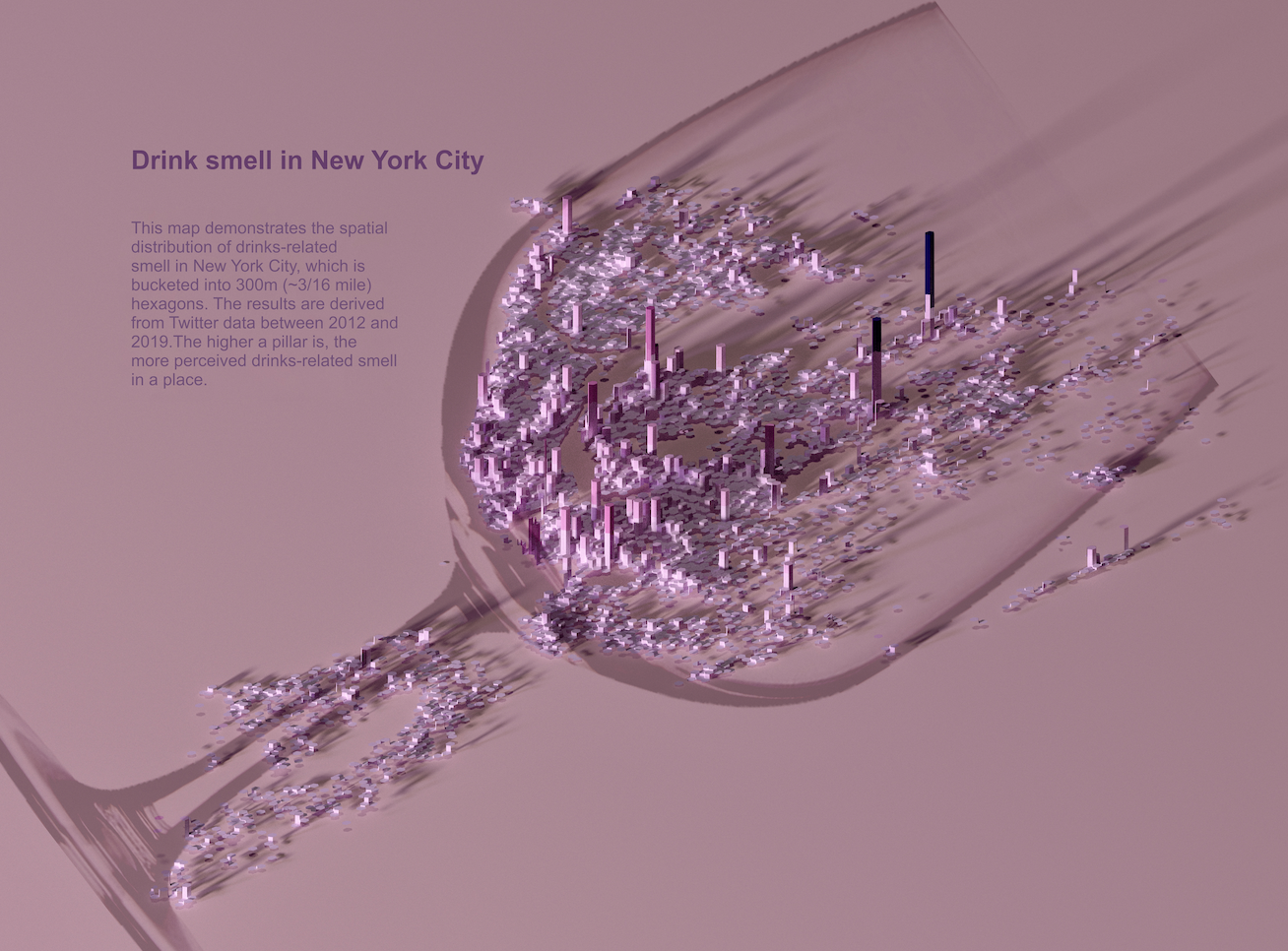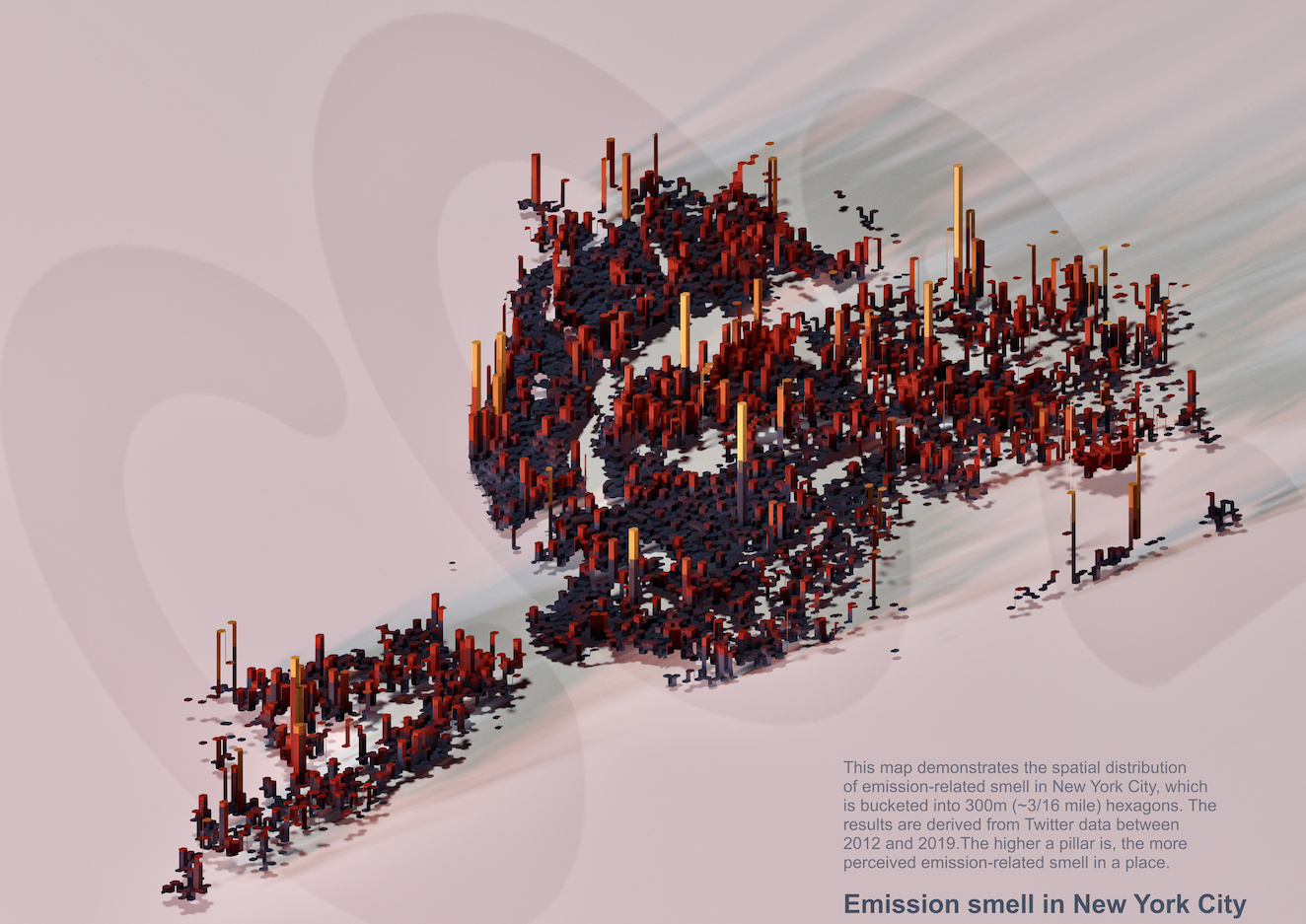Art of Smellscape
Making invisible smells visible
Are there particular smells that always bring you joy or unhappiness, such as your favorite meals/drinks or smokey car exhaust? Smell is a powerful sensory experience that has a significant impact on how we perceive and experience urban spaces. However, it is often overlooked. This research aims to incorporate the role of smells, both positive and negative, in the urban experience, as a way to begin to understand this relatively neglected sensual dimension of the urban study. Leveraging social media and big data analysis techniques, the study derives different urban smells from Twitter data in New York City and maps them in space to make the invisible smells visible. Figures 1 and 2 provide two examples of derived urban smells, namely drinks-related and emission-related smells, to illustrate how smells link to social space and physical space, separately. The results show that the smells can vary from space and time, correlating to urban forms and functions. Identifying these smells and others in different spaces is essential to further exploring how smells impact human behavior, emotions, health, and quality of life.
In summary, this study provides a new dimension – the sense of smell – for city planners to better understand urban spaces and design more fulfilling and human-oriented spaces, so as to improve space quality and vibrancy.
Figure 1 and Figure 2 were purposely designed to integrate the beauty in the study. More specifically, drinks-related smells, such as drinking wine, are a way for people to relax themselves or socialize with others in the stressful city life. Therefore, the color lavender, known for its calmness and relaxation, is chosen as the main color tone to put the audience in a relaxed state. The wine glass in the background is intended to allow audience to consciously connect the imagery to their personal experiences, such as drinking and socializing.

For emission-related smells, such as car exhaust, can negatively impact the environment and contribute to global climate change. Therefore, I use dark colors like black and crimson, to imply its negative influences. Besides, red and color darker than red are also used by the Environmental Protection Agency (EPA) to inform/evaluate air quality. The word “CO2” in the background can make viewers naturally think of global warming and environmental issues.
